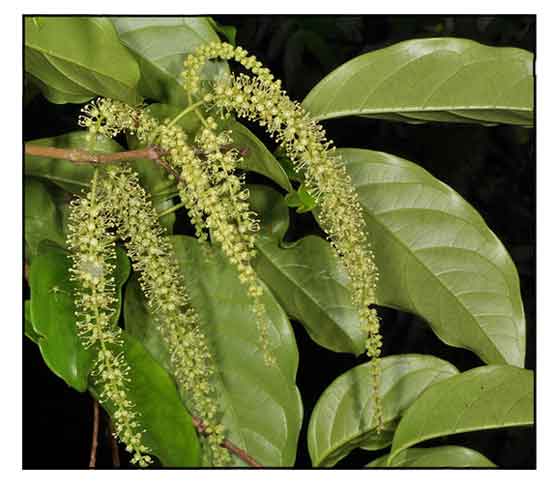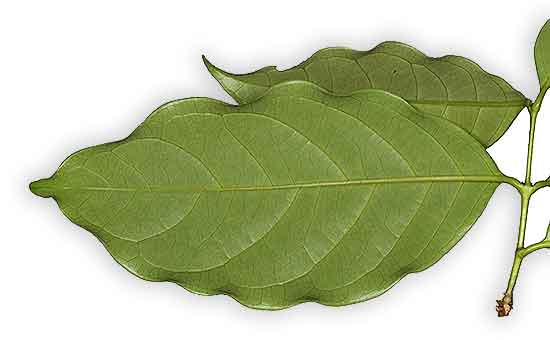
Family • Crypteroniaceae
Tiaui
Crypteronia paniculata Blume
PANICLED CRYPTERONIA
Yin yi mu
| Scientific names | Common names |
| Crypteronia paniculata Blume | Barakbok (Philippines) |
| Henslowia paniculata (Blume) Miq. | Malabayanas (Phil.) |
| Accepted infraspecifics (2) | Mampas (Tagalog) |
| Crypteronia paniculata var. paniculata | Tiaui (Tagalog) |
| Crypteronia glabra (Wall.) Planch. ex Endl. | Panicled crypteronia (Engl.) |
| Crypteronia leptostachys (Planch.) Endl. | |
| Crypteronia lutea (Blanco) Blume | |
| Crypteronia paniculata var. glabra (Wall.) Kurz | |
| Crypteronia paniculata var. leptostachys (Planch.) Koord. & Valeton | |
| Crypteronia wallichii A.DC. | |
| Henslowia glabra Wall. | |
| Henslowia leptostachys Planch. | |
| Quilamum luteum Blanco | |
| Crypteronia paniculata var. pubescens (Wall.) Kurz | |
| Crypteronia affinis (Planch.) Planch. ex Endl. | |
| Crypteronia hookeri A.DC. | |
| Crypteronia paniculata var. affinis (Planch.) Beus.-Osinga | |
| Crypteronia pubescens (Wall.) Planch. ex Endl. | |
| Crypteronia pubescens var. affinis (Planch.) A.DC. | |
| Crypteronia pubescens var. hookeri (A.DC.) C.B.Clarke | |
| Henslowia affinis Planch. | |
| Henslowia hookeri Wall. | |
| Henslowia pubescens Wall. | |
| Crypteronia paniculata is an accepted species. KEW: Plants of the World Online | |
| Other vernacular names |
| INDIA: Goru-mora (Assamese), Mosuginsep, Garumara (Bengali) |
| CHINA: Yin yi mu. |
| INDONESIA: Kayu celeng (Java), Kayu kapas (Sumatra). |
| LAOS: May sa am. |
| MALAYSIA: Bekoi, Buah babi, Ubah semut. |
| THAILAND: Ka som, Pi-kui, Khap. |
| WEST JAVA: Ki banen. |
Botany
Distribution
Properties Availability |
May 2024
![]()
 |
| PHOTOS / ILLUSTRATIONS |
| IMAGE SOURCE: Crypteroniaceae : Crypteronia paniculata / Flowering twig / Copyright © 2013 by P B Pelser & J F Barcelona (contact: [email protected]) [ref. DOL78249] / Non-Commercial Use / Image modified / Click on image or link to go to source page / Phytoimages.siu.edu |
| OTHER IMAGE SOURCE: Crypteroniaceae : Crypteronia paniculata / Fruits / Copyright © 2015 by P B Pelser & J F Barcelona (contact: [email protected]) [ref. DOL94600] / Non-Commercial Use / Image modified / Click on image or link to go to source page / Phytoimages.siu.edu |
| OTHER IMAGE SOURCE: Crypteroniaceae : Crypteronia paniculata / Abaxial view of leaf / Copyright © 2013 by P B Pelser & J F Barcelona (contact: [email protected]) [ref. DOL78299] / Non-Commercial Use / Image modified / Click on image or link to go to source page / Phytoimages.siu.edu |
Additional
Sources and Suggested Readings |
• |
DOI: It is not uncommon for links on studies/sources to change. Copying and pasting the information on the search window or using the DOI (if available) will often redirect to the new link page. (Citing and Using a (DOI) Digital Object Identifier) |
| List of Understudied Philippine Medicinal Plants |
| New plant names needed The compilation now numbers over 1,300 medicinal plants. While I believe there are hundreds more that can be added to the collection, they are becoming more difficult to find. If you know of a plant to suggest for inclusion, please email the info: local plant name (if known), any known folkloric medicinal use, scientific name (most helpful), and, if possible, a photo. Your help will be greatly appreciated. |
• |
 |




